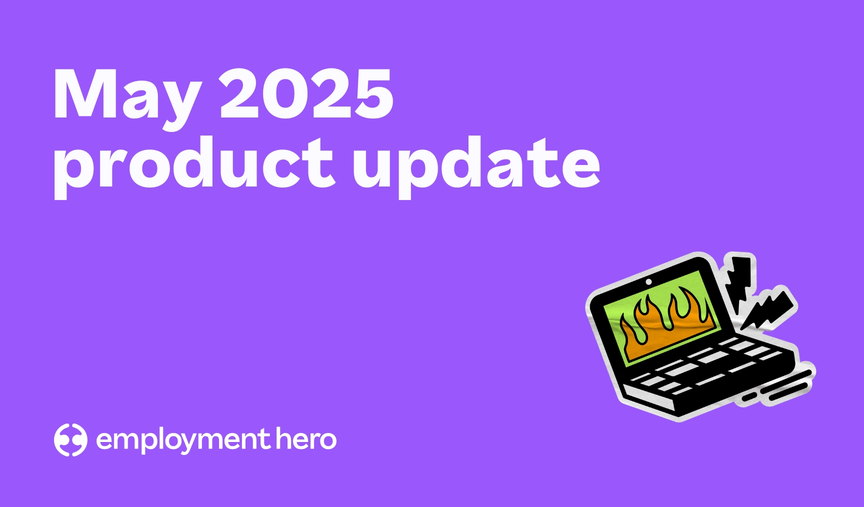What is hot desking and why is it so popular?
Hot desking brings about a whole variety of benefits, from convenience and flexibility to community and creativity. But how does it work, and is it right for your company?

Contents
Hot desking — does your company implement it? And if so, do you love or hate it?
Some believe that it will kill your company, some are strongly opposed to it, while others believe that it is here to stay, especially since its rise in popularity during the pandemic.
It’s been implemented all across the world as maintaining empty office spaces is expensive for companies, so demand for flexible working spaces has increased tremendously. Hot desking brings about a whole variety of benefits, from convenience and flexibility to community and creativity. But how does it work, and is it right for your company?
What is hot desking?
Hot desking is essentially an office organisation system that renders the classic fixed, personal workstation obsolete. Employees now choose a new desk every day, rather than get assigned a permanent desk location — leading to multiple workers sharing a single workstation across different times of the day.
The end game is long-term cost savings for the organisation and increased productivity for employees, given that many employees are not always in the office at the same time.
Did you know? Hot desking is said to have originated from the U.S Navy’s practice of ‘hot racking’ or ‘hot bunking’ — where sailors finishing a shift would take the warm bunk of another sailor who was beginning his shift.
Why is hot desking so popular today?

The concept isn’t new — during pre-pandemic periods it was already the norm for freelancers and start-ups who were used to coworking spaces. Tech companies like Google and Facebook were the pioneers of modern working environments and desk-sharing, but with increasing digitisation, it has become widespread in various industries. That is, until the pandemic sped things up and made it a trend worldwide.
As a result of social distancing measures that necessitated half of office workstations to remain unused, companies were all forced to de-assign personal workstations and make them universally available for all to use, in order for employees to resume on-site work.
The future of work is flexible, which has led to many businesses introducing hybrid working, so employees can work some days at home and some in the office. It’s a benefit most employees say they want, which justifies the decision, except it makes for a lot of underused space.
In the post-Covid workplace, permanent desk assignments have become rare because fewer employees are coming into the office every day. To help reduce operational costs, companies have opted to downsize the physical office space instead, and implement hot desking to maximise the use of existing office space.
Now that flexibility is here to stay, it makes hot desking a crucial part of the modern working culture, and also enhances the attractiveness of your brand. According to our Employee Movement and Retention Report, having flexible working options was the one of the top reasons for job seekers to consider a role at an organisation. Companies who do not adjust to this risk losing their best talent, and getting left behind in a job seekers market.

That’s exactly why the growth in hot desking has increased tremendously. Envoy, a workplace-platform provider that launched a desk-reservation system in mid 2021, has seen their number of clients grow by more than 70%, and the number of active employees—those with one or more desk bookings—has nearly tripled.
How do hot desks work?
The hot desking system differs from company to company.
Some companies simply operate on an ad-hoc, first come, first served basis, where employees use any available empty desks they can find in the office. Whilst this method can be attractive because it doesn’t require any additional investments or infrastructure costs, it can be frustrating for employees to commute all the way to the office, only to find that all the desks are occupied, or that the location of the available desk is far away from their teammates, which negates the purpose of working from the office.
Some companies have taken it a step further by implementing reservation systems which make things convenient, seamless, and reliable. Employees get an overview of all the desk spaces in the office, and can now reserve their desks days in advance before they arrive in the office. It also enables teams to coordinate schedules on which days they’ll be working in the office together, and book clusters of desks accordingly.
This short-term, on-demand reservation method not only facilitates greater flexibility and transparency, it provides employees with a clear understanding of where their workstation will be — which is important for personal productivity and sharing of information with other colleagues who might be looking for them in the office.
Benefits of hot desking

1. Reduces cost of office space
Before the pandemic, office property in big cities was so expensive that underused space cost companies an estimated RM19.43 billion (~$7.1 billion AUD) a year in London alone. Workstations were also constantly left empty every day due to business trips, training or employee vacations. It was not an efficient use or optimisation of space at all — hot desking makes it possible to take advantage of these inefficiencies and maximise spatial capacity.
The opportunity to reduce rental and operational costs has no doubt been the main motivating factor in companies embracing the hot desking model. It enables organisations to downsize their office space, reducing rent significantly.
By minimising spatial requirements, it also results in reduced costs with regards to the outfitting of each desk — fewer tables, chairs, monitors, printers, office amenities and more. It all adds up to a significant amount of savings.
2. Improves your employee value proposition (EVP)
Having a hybrid working model is key in improving your employee value proposition (EVP). An EVP isn’t just about compensation, it’s about the unique values you can bring to your employees. It covers all the incentives, perks, benefits and support systems that you put in place as an employer to make working for you attractive, especially in relation to your competitors.
In the new normal where everyone is reluctant to return to pre-pandemic ways of working, offering hybrid working in your organisation gives you a key advantage. Employees enjoy having greater flexibility to work when and where they want to. This leads to better wellbeing and employee engagement as they feel empowered and valued.
Create and manage your EVPs much more easily with Employment Hero — we’ve got reward and recognition features, perks and benefits, e-learning content and more on our intuitive HR platform.
3. Enhances productivity
With hot desking, employees are free to choose their own personal desk for the day. This provides them with the flexibility to decide on the location of their desk — if they need extra concentration for the tasks of the day and are keen to get things done in silence, they can opt for a quieter corner in the office. Or if they’re keen to interact with colleagues and discuss perspectives on various issues, they can choose to sit around chatty co-workers.
This enables them to plan and schedule their days more wisely, so they can be productive in the office with an end goal in mind, and not get distracted. For those who struggle with working at home due to personal circumstances, such as dealing with background noise, kids running around, lack of sufficient space at home to set up a work corner and more, hot desking provides them with a much-needed alternative to work from the office.
The risk of burnout and project fatigue is also reduced by an ever-evolving work environment — when employees are exposed to a thriving shared office space they are likely to become more motivated at work.
4. Improves collaboration between teams

Traditional workspaces with assigned desks normally have employees seated together with their team members, performing similar roles. Hot desking encourages employees to meet and talk to colleagues from other teams and departments that they wouldn’t normally interact with. Instead of teams sitting in silos, confined to the same desk everyday, hot desking encourages more cross-functional interactions.
This leads to valuable discussions and conversations with individuals from different backgrounds, roles and industries — something that’s hard to do in a regular office. Hot desking also provides an efficient way for employees to collaborate on projects or tasks that require input from multiple other departments.
Shared desk usage fosters an open work environment, which enhances inter-departmental communication, creating stronger teamwork and relationships in the workplace. For freelancers or start-ups in coworking spaces, hot desking arrangements help them expand their network of partners and potential clients, leading to exciting partnerships and innovation.
5. Keeps the office space clean and tidy
By encouraging employees to become minimalists, hot desking improves workplace cleanliness by a far mile. Because they have to share the same workspace with others, it forces employees to be more organised and bring only what they really need to work — their laptops, notebooks, mobiles and more.
The absence of having personal photos and belongings in the workplace leads to a cleaner and sleeker shared office space. Since employees don’t have their own space, they can’t clutter it with unnecessary post-it notes, snacks, PR gifts, paperwork, and more.
The hot desk mentality ensures that every employee is motivated to be tidy and considerate when they work — if they arrived at a clean and neat workspace, they should be leaving it the way they found it. Some companies have even gone the extra mile to provide antibacterial wipes and hand sanitizers at desks, to reinforce the message that employees should leave their desks spotless at the end of the day.
A study by Princeton University has shown that when participants cleared clutter from their work environment, they were able to focus better, process information, and increase productivity. Hot desking facilitates just that by ensuring that everyone maintains a clear workspace without distractions, boosting overall productivity.
In a calm and organised environment, employees are less stressed and can focus better on their work. That’s a win-win situation for both employers and employees!
6. Provides flexibility for employers too
Hot desking benefits businesses too, because by embracing this strategy, it opens up your hiring choices. There are many working parents, new parents, or those with special health concerns who would struggle to commit to a conventional 5-day work week. Often regular commuting is just not possible for them.
Hot desking enables businesses to hire them regardless, and offer them a hybrid working arrangement adjusted to suit their needs. 3-day work weeks for busy mums juggling everything? That works with hot desking.
Companies who rely heavily on interns, freelancers and contractors in their teams can also integrate them more easily into the workplace with hot desking. Without a fixed workspace for everyone, it makes it easy for them to reserve desks and come into the office as and when it’s needed, rather than struggle to squeeze into any available space in the office, which doesn’t make for a conducive working environment at all.
Disadvantages of hot desking

1. Lack of personalisation
Hot desking can result in a loss of personalisation and privacy for employees. Without a space to call their own, they are unable to display personal items or store their personal belongings in a fixed section of the office. Gone are the days of having family photos, calendars, motivational quotes and post-it notes plastered all over work desks.
The perfectly adjusted office chair, the height of the table, the angle of the monitor — these personalisations are all omitted with hot desking. Settling down at a brand new desk each day can be disruptive to employees who like to have a routine, and cause fatigue when they have to go through the entire routine each time they go into the office.
Hot desking is more impersonal, which can evoke feelings of being just ‘a cog in the machine’ and not belonging. This can reduce loyalty towards the company and also affect motivation levels, as employees don’t have ownership and control over their working environment.
2. Less team rapport and communication
Sitting together in teams generally promotes constant communication, as it makes it easier to have quick discussions and casual conversations. Having fixed desks rather than hot desks means employees in the same team constantly interact with each other whenever they are in the office, building a stronger sense of team rapport and camaraderie.
Hot desking however, shifts the focus away from team communications to individual communications. Unless a team books a cluster of hot desks together, employees end up being more isolated, working from their own desks and relying on digital communication tools to contact each other. It also makes looking for someone in the office complicated, because you can’t head to a specific section where their desk is usually situated.
3. ‘Desk hogging’ or ‘squatting’
Another pitfall of hot desking is ‘desk hogging’. Employees may take a strong liking to a particular desk in a prime location, and try to extend ownership over it by regularly booking that specific one every time they head into the office. Or leave their personal belongings on that desk so no one else can use it. That negates the entire concept of hot desking, and is unfair to other employees who deserve a fair chance at using that space too.
It’s important for businesses to facilitate a shared ownership of all desks, making it possible for anyone to use any available desk without feeling like they’re sitting at someone else’s.
4. Lack of availability and adaptability
For companies that use a first-come-first-served basis for hot desking, a lack of availability in desks can hinder productivity. It’s key to maintain a good desk-to-employee ratio so employees need not worry about the availability of desks in the office, especially when they’ve already travelled all the way there. A good booking system is critical, or else it will result in unnecessary stress and anxiety, when employees have to worry about their work situation on top of their existing workloads.
Hot desking also means most desks are identical, which doesn’t address the need for personal adaptations. Employees all have their individual preferences regarding the height of their chairs, tables, screen heights, screen sizes, connectivity, privacy, and more. While some can be easily addressed with having adjustable chairs, tables and monitors at every desk, a variety of workspaces is needed to meet different functions.
Employees need some spaces for quiet concentration and confidential discussions and other spaces for social interactions and team discussions, not a one-size-fits-all solution.
5. Discriminates those with disabilities
The reality is that hot desking simply isn’t a feasible solution for some. Employees may have hidden disabilities or health issues that make hot desking impossible, because they need their own personal space with features adjusted to their needs.
Being flexible in accommodating both groups of employees — those who are happy to hot desk and those who aren’t or can’t — is important to prevent unnecessary stigma or discrimination, and ensure that everyone feels engaged and included.
Allow remote work as a hot desk alternative

A great alternative to the hot desking model is remote work, and it’s something that we at Employment Hero live and breathe by.
What began as an involuntary solution to working in the midst of the pandemic, has now become the future of work. It’s being employed by many businesses all over the world, including Facebook, Airbnb, Amazon, and more.
There are so many benefits to remote working, but most of all, it makes work inclusive and accessible — something hot desking doesn’t really achieve. There are plenty of ways you can get the most out of a remote working culture, and an endless list of productivity tools you can incorporate so employees work better from home.
If you’re worried about performance, use a performance management software like Employment Hero to manage employees whilst working remotely. From 1:1s to performance reviews, you can create a team at the top of their game, regardless of where they’re located.
There are also plenty of methods you can use to measure the productivity of remote teams, if you’re struggling with trust issues on having a remote team.
Hot desks are only the beginning of the future of work
Workplaces have changed so much over the past few years. Take a peek into future working trends, so you can set your organisation up for success by being at the forefront of the digital transformation wave.
Regardless of whether you’re using hot desks, remote working, or even venturing to the metaverse, don’t forget to prioritise employee engagement and wellbeing too.
Transform your organisation into a future-forward one by becoming a master of effective remote workforce management. Download our remote first workplace playbook now.
Related Resources
-
 Read more: Product Update: June 2025
Read more: Product Update: June 2025Product Update: June 2025
Follow our June 2025 product update as we share all of the latest and greatest features we’ve released over the…
-
 Read more: Product Update: May 2025
Read more: Product Update: May 2025Product Update: May 2025
Follow our May 2025 product update as we share all of the latest and greatest features we’ve released over the…
-
 Read more: Product Update: April 2025
Read more: Product Update: April 2025Product Update: April 2025
Follow our April 2025 product update as we share all of the latest and greatest features we’ve released over the…








